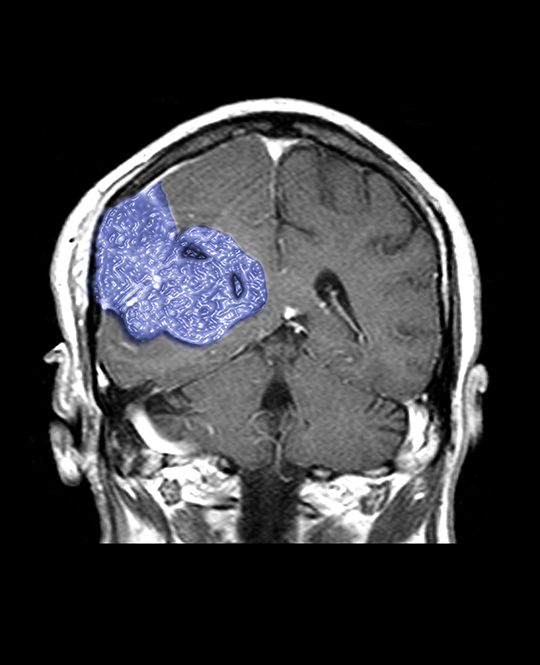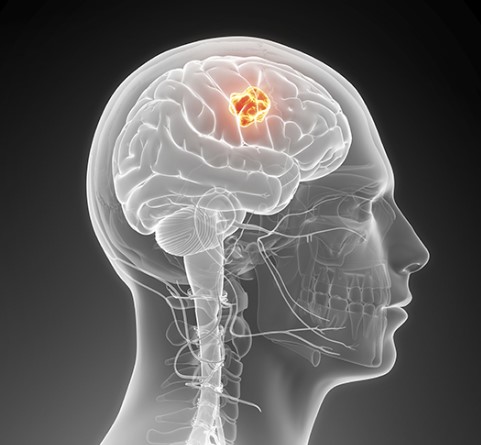On this page:
We have 3 convenient locations throughout Southeastern Wisconsin.
What are brain tumors and brain cancer?
Brain tumors are divided into many classifications. A distinction is usually made between primary brain tumors, or tumors of the brain itself, and metastatic tumors, or tumors that originate elsewhere in the body and travel through the bloodstream to the brain.
Another distinction is made between malignant or cancerous tumors and tumors that are benign. Primary brain tumors may be either benign or malignant. Metastatic tumors are always malignant.
What are causes of brain tumors and brain cancer?
Brain tumors are a mass or growth of abnormal cells that happen in the brain.
Brain tumors can begin when normal cells have mutations in their DNA. These mutations cause the cells to grow and divide very rapidly.
Cancerous tumors also occur when cancer begins elsewhere in the body and spreads to the brain.
People who have been exposed to a type of radiation called ionizing radiation- occuring in the materials from atomic bombs, or the radiation used to treat cancer- have an increased risk of brain tumor.
People who have a genetic history of genetic anomalies or a history of brain tumors are also at increased risk.

How are brain tumors and brain cancer diagnosed?
Some brain tumors do not produce any symptoms. Other times, symptoms may include headaches (especially at night), seizures, or neurological difficulties related to speech, vision, numbness, weakness, balance or walking.
The classification of the tumor is determined after a biopsy. During a biopsy, some or all of the tumor is removed and the cells are examined under a microscope. Definitive treatment of the tumor cannot be started until a final diagnosis is completed after biopsy.
At the time of the initial biopsy, the surgeon will remove as much of the tumor as possible without sacrificing function such as speech or movement.
In cases where the tumor is adjacent to vital brain structures a decision may be made prior to surgery to perform only a biopsy rather than attempting to remove all or most of the tumor. A biopsy is usually done using a needle to remove just a portion of the tumor.
What types of tumors are benign and what are the treatment options?
 Meningiomas are tumors of the meninges or coverings of the brain. Typically they are benign.
Meningiomas are tumors of the meninges or coverings of the brain. Typically they are benign.
Acoustic neuromas or tumors of the acoustic (hearing) nerve and pituitary tumors are other common benign tumors.
They may be treated with surgical resection (removal), radiation or stereotactic radiosurgery.
The type of treatment depends on the size and location of the tumor, surrounding critical brain structures, and the patient’s general health and well-being.
What types of brain tumors are malignant and what are the treatment options?
Gliomas are malignant tumors of the brain itself. Gliomas are graded, or divided, into levels based upon their rate of growth and potential for rapid deterioration. The higher the grade, the more aggressive the tumor.
Treatments for gliomas depend upon the grade and will typically involve a combination of therapies including surgical resection, chemotherapy and radiation. The rate of survival depends upon the grade of the tumor as well as the individual’s response to therapy.
The total treatment of brain tumors is a team effort. This involves the neurosurgeon, the medical oncologist, the radiation oncologist, their staff, and the patient and family.
New treatments are being developed rapidly and the prognosis for patients with brain tumors is brighter than it ever was in the past.
For additional information about brain tumors and their treatment, visit the American Brain Tumor Association at www.abta.org, the National Brain Tumor Society at www.braintumor.org or the Acoustic Neuroma Association at www.anausa.org.

